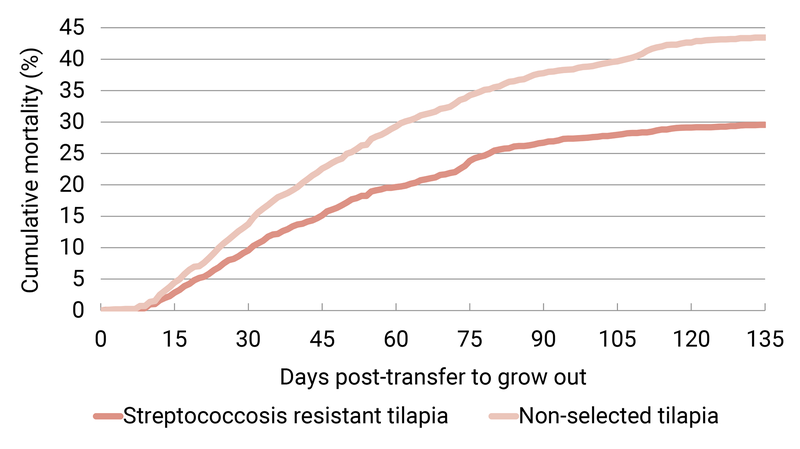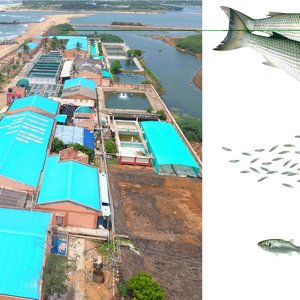After more than five years of R&D breeding work, GenoMar introduced a new streptococcosis-resistant Nile tilapia to address one of the most economically important diseases in this species. Repeated laboratory tests and a field trial demonstrated increased survivability of approximately 30% for the tilapia selected for streptococcosis resistance. For farmers, tilapia with genetic resistance will lead to more sustainable and profitable production.
GenoMar Genetics, which manages the breeding and distribution of tilapia genetics under the brands GenoMar, Aquabel and AquaAmerica, initiated research in 2015 with the aim of exploring genetic variation to this deadly disease. Since 2016, resistance to streptococcosis has been routinely included in the selection index of the company’s breeding programs for Nile tilapia. The company reported that similar research to increase the survivability in other major diseases like columnaris and francisellosis is ongoing.
“Our geneticists can now accurately determine the genetic component in the DNA of tilapia that codes for increased survival towards streptococcosis, and we used this knowledge to optimize the selection decisions leading to animals with higher streptococcosis resistance without negatively affecting other important traits,” said Rajesh Joshi, senior researcher at GenoMar Genetics.
The advantage of genetic resistance is that it protects fish throughout the whole tilapia farming cycle from birth to harvest and does not have application costs. “This is a particularly important innovation for the control of streptococcosis in the tilapia aquaculture industry which struggles with the adoption of vaccination and use of antibiotics. We have managed to prove that genetic resistance is an efficacious and cost-effective new tool against streptococcosis,” said Alejandro Tola Alvarez, CEO at GenoMar Genetics.
To validate the effectiveness of the genetic selection, laboratory tests and field trials were performed to compare the survival between the selected and non-selected tilapia fish. The relative survival after using two different routes of infection (IP and cohab) with Streptococcus agalactiae were 42% and 25%, respectively, for the selected fish.
Further, another experiment was performed in Malaysia under field conditions to see whether improved survival in laboratory challenges also applied in commercial farms or not. Results showed increased survival by around 30% for the selected fish (Fig. 1).
The first tilapia fingerlings selected for streptococcosis resistance are available to Asian customers under the GenoMar brand from January 2021.

Figure 1. Daily, cumulative mortality in a field trial with tilapia selected for streptococcosis resistance and non-selected tilapia, 135 days post-transfer to grow out. Both groups consisting of around 2000 fish each, were mixed, individually tagged, and raised together in cages at a commercial farm in Malaysia.













